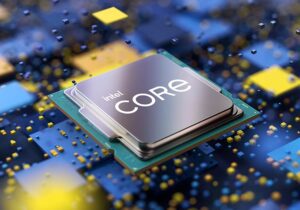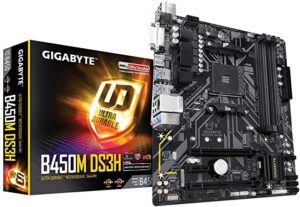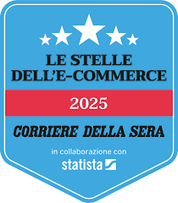Desktop computer, features, advantages and disadvantages of this PC
As can be seen from the name, the essential characteristic of a desktop computer is its little or no mobility.

Desktop computer is in fact an umbrella term, exemplifying a category of computers that are moved little or no time during their "life".
The desktop PC is therefore the desktop computer in the office, but also the AllInOne in the shop or the tower or mini tower that we have on our desk at home.
However, the fixed desktop can also be a cutting-edge computer, dedicated to graphics, video editing or computer gaming.
Definition of desktop computer
We can therefore consider the fixed desktop computer as a model for this category of computers.
We are therefore faced with a computer equipped with a case, a monitor and various accessories.
Various parts that make up a whole, which we can install or mount in different configurations.
Components that create a desktop computer
The number of components may vary, but its main core is based on four pieces, which can sometimes be assembled into a single body, as in modern all-in-ones which incorporate monitors and cases in a single block.
In the imagination, however, the "typical" desktop computer is made up of 4 pieces. The case, heart and brain of the system, the display and two input peripherals, keyboard and mouse.
To these four components you can then add an infinite number of accessories, from input ones (scanners, graphics tablets, card or memory readers, etc.) to output ones (audio devices, printers, etc.).
The heart of the desktop PC
As already indicated previously, the heart and brain of the desktop computer is the case. An indispensable part of it is the component that usually gives the computer the most value.
Heart of the computer, as all the power and control systems for the other devices are present in the case. Brain of the same, as the processing and memory capabilities of the machine are the total prerogative of what is normally installed in the case.
But what exactly does the case contain?
The case, a "box" that can have various shapes and sizes, contains all the fundamental hardware for the computer itself. Various elements, which in combination with each other allow the fixed personal computer to carry out the activities for which we have chosen it.
In particular:
 The CPU
The CPU
Main component of the computer. In fact, this unit carries out each of the calculations needed to start and operate any operation carried out by the computer, from those "commanded" by the user to those carried out independently.
The processor in modern computers is made up of a set of chips, a trick that allows you to increase the computing capacity of the computer without running into power or cooling problems. The chips work at a frequency, indicated in MHz and multiples. The higher this value, the greater the computing power of the computer.
RAM memory
It is one or more short-term memory banks. This name indicates a memory that is "used" for the information needed at the moment and which is continuously reset. RAM is in fact the support point for the work of the processor. The greater the capacity of the RAM, the greater the number of information and data that will be kept "ready" for the processor, with a consequent speeding up of each process.
The Hard Disk
What doesn't fit in RAM ends up in the hard disk . All our files, drivers and what is needed to run the various software are also saved in it. The Hard Disk is the warehouse of our PC , the larger and faster it is, the better.
Video Card 
It can be incorporated into the motherboard or dedicated for higher-performance computers or those intended for more demanding graphics uses. We can consider the video card (or GPU ) as a set of processor and RAM dedicated exclusively or almost exclusively to video rendering.
Motherboard
Base and power source for all the components mentioned above and many others, the motherboard is an electronic circuit equipped with connections and slots. This is the largest component of the case and often defines the size of the case.
 Optical drives
Optical drives
CD and DVD players, two devices that, despite no longer being so popular thanks to optical flash and cloud, are often still present in our desktop computers.
Doors
USB of various types, HDMI etc etc. Ports are the system with which the case interacts with external peripherals.
power supply
Each component of the case must be powered in order to function, a task performed by the power supply.
We are therefore faced with a complex, modular system, which has many advantages and few, very few disadvantages, let's see them.

Advantages of the desktop computer
Being made up of various parts, one of the advantages of the desktop computer is its modularity and ease of updating. Both as regards the components of the desktop PC and what is inside the case, the desktop computer is easily upgradeable and repairable. In fact, many desktop computers are born as "assembled", a term that indicates that the computer itself and above all what is in the case has been assembled starting from the proposals and products of various manufacturers.
The desktop PC is also the simplest to repair, thanks to the simplicity of use with which this system is created.
Disadvantages of the desktop PC
One of the major disadvantages of this type of computer is the name of the machine itself. Fixed, i.e. not easily moved to be used in another location.
The fixed PC in fact provides a predetermined workstation, usually a desk and limited mobility, usually only in the case of moves or changes of office.
The second disadvantage of the fixed desktop PC is easily circumvented with an optional. To operate, the fixed PC is totally dependent on the presence of a constant electrical supply. A blackout, even a temporary one, will in fact lead to the computer shutting down and the related loss of work.
A disadvantage which, as written, can be circumvented thanks to a UPS, i.e. an external power supply equipped with batteries that allows the operator to continue working at least until the ongoing activity is saved.
The desktop PC is therefore a solid and long-lasting solution, which is why it is an excellent choice even when you choose a reconditioned or refurbished desktop computer instead of a new one.








